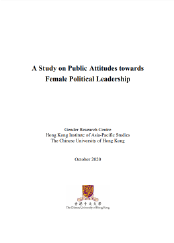
|
||||||||||||||||||||||||||||||||||||||||||||||||||||||||||||||||||||||||||||
| Research | ||||||||||||||||||||||||||
Strategic Research Clusters
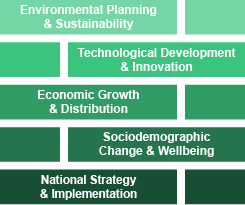 Policy Research @ HKIAPS has identified five closely linked interdisciplinary research clusters to promote academic excellence and social contribution.
Policy Research @ HKIAPS has identified five closely linked interdisciplinary research clusters to promote academic excellence and social contribution.
In the initial phase, we are focusing on research strengths within the Chinese University and on aligning them with the government’s policy priorities and regional development strategies, particularly with the Belt and Road Initiative and the Guangdong-Hong Kong-Macao Greater Bay Area development plan. We will further identify global strategies that are relevant to Hong Kong. ■ |
||||||||||||||||||||||||||
Research Projects * Policy Research @ HKIAPS member
|
||||||||||||||||||||||||||
On Belt and Road Initiative and Greater Bay Area  The Impact of Sino-US Disputes on the Economy of the Guangdong-Hong Kong-Macao Greater Bay Area
The Impact of Sino-US Disputes on the Economy of the Guangdong-Hong Kong-Macao Greater Bay Area by Hongling Guan (PI) & Yun-wing Sung* |
||||||||||||||||||||||||||
 Sexual Harassment: The Challenges of Navigating Gender Norms in the Guangdong-Hong Kong-Macao Greater Bay Area
Sexual Harassment: The Challenges of Navigating Gender Norms in the Guangdong-Hong Kong-Macao Greater Bay Area by Fanny M. Cheung* (PI) & Sally K. W. Lo* |
||||||||||||||||||||||||||
 Education as Soft Power: Hong Kong-trained Non-local University Students’ Connections and Their Career Plan in Hong Kong
Education as Soft Power: Hong Kong-trained Non-local University Students’ Connections and Their Career Plan in Hong Kong by Victor Zheng* (PI), Siu-lun Wong, Anthony Y. H. Fung*, Kevin T. W. Wong, & Hua Guo* |
||||||||||||||||||||||||||
On Family  A Study on Family Research in Hong Kong: A Critical Review and Annotated Bibliography
A Study on Family Research in Hong Kong: A Critical Review and Annotated Bibliography by Mooly M. C. Wong (PI), Joyce L. C. Ma (PI), Po-san Wan*, Ting-kwok Iu, Lily Xia, & Rhea Rui Yuan |
||||||||||||||||||||||||||
 A Study on Family Well-being in Hong Kong
A Study on Family Well-being in Hong Kong by Joyce L. C. Ma (PI), Mooly M. C. Wong, Po-san Wan*, & Lily Xia |
||||||||||||||||||||||||||
On Gender  A Study on Public Attitudes towards Female Political Leadership
A Study on Public Attitudes towards Female Political Leadership by Jing Song (PI) & Sally K. W. Lo* (Co-PI) |
||||||||||||||||||||||||||
 Train the Trainers: Minority Girls and Gender Justice
Train the Trainers: Minority Girls and Gender Justice by Raees B. Baig (PI), Susanne Y. P. Choi, Sally K. W. Lo*, & Janice Chan |
||||||||||||||||||||||||||
On Health  On the Road to Combat the Pandemic: Hong Kong Citizens’ Views on the Impact of and Responses to COVID-19
On the Road to Combat the Pandemic: Hong Kong Citizens’ Views on the Impact of and Responses to COVID-19 by Victor Zheng*, Hua Guo*, & Fanny M. Cheung* |
||||||||||||||||||||||||||
 Implementation of a Family-based Multimedia Educational Programme to Promote the Utilisation of Colorectal Cancer Screening by Older South Asian Ethnic Minorities in Hong Kong
Implementation of a Family-based Multimedia Educational Programme to Promote the Utilisation of Colorectal Cancer Screening by Older South Asian Ethnic Minorities in Hong Kong by Winnie K. W. So* (PI), Dorothy N. S. Chan, Kai-chow Choi, & Carmen W. H. Chan |
||||||||||||||||||||||||||
 A Study on Public Attitudes towards Improving the Sanitation of Public Toilets
A Study on Public Attitudes towards Improving the Sanitation of Public Toilets by Yuk-sik Chong (PI), Fanny M. Cheung*, Victor Zheng*, & Po-san Wan* |
||||||||||||||||||||||||||
 An Ongoing Follow-up Study on the Participation Rate in Cervical Cancer Screening among South Asian Women
An Ongoing Follow-up Study on the Participation Rate in Cervical Cancer Screening among South Asian Women by Dorothy N. S. Chan (PI), Winnie K. W. So*, Kai-chow Choi, & Sharmila Gurung |
||||||||||||||||||||||||||
 Development of a Community Health Worker-led Multimedia Intervention to Increase Cervical Cancer Screening Utilization among South Asian Women in Hong Kong
Development of a Community Health Worker-led Multimedia Intervention to Increase Cervical Cancer Screening Utilization among South Asian Women in Hong Kong by Cho-lee Wong (PI), Winnie K. W. So*, & Dorothy N. S. Chan |
||||||||||||||||||||||||||
 Development of a Multimedia Health Education Programme to Promote Cervical Cancer Prevention among South Asian Women in Hong Kong
Development of a Multimedia Health Education Programme to Promote Cervical Cancer Prevention among South Asian Women in Hong Kong by Winnie K. W. So* (PI), Carmen W. H. Chan, Doris Y. P. Leung, Helen Y. L. Chan*, Sek-ying Chair, & Andrew Chan |
||||||||||||||||||||||||||
 Health Behaviour in School-aged Children Study in Hong Kong: Assessing the Physical, Emotional, and Social Well-being
Health Behaviour in School-aged Children Study in Hong Kong: Assessing the Physical, Emotional, and Social Well-being by Esther S. C. Ho* (PI), Anthony Y. H. Fung*, & Annisa Lee Lai |
||||||||||||||||||||||||||
 Health Inequity Matters to Everyone: The Vision and Research Focus of the Newly Established CUHK Institute of Health Equity
Health Inequity Matters to Everyone: The Vision and Research Focus of the Newly Established CUHK Institute of Health Equity by Jean Woo*, Michael Marmot, Eng-kiong Yeoh, Hung Wong*, & Roger Chung* |
||||||||||||||||||||||||||
On Socio-political Participation  The Advantages and Limitations of the Participation of Professionals in Public Affairs
The Advantages and Limitations of the Participation of Professionals in Public Affairs by Victor Zheng* & Po-san Wan* |
||||||||||||||||||||||||||
On Youth  A Longitudinal Study of Adolescents in Hong Kong (HKLSA)
A Longitudinal Study of Adolescents in Hong Kong (HKLSA) by Esther S. C. Ho* (PI) & Stephen W. K. Chiu |
||||||||||||||||||||||||||
 Young People’s Perceptions of the Future: A Comparison of Hong Kong and Beijing
Young People’s Perceptions of the Future: A Comparison of Hong Kong and Beijing by Anthony Y. H. Fung* (PI), Victor Zheng*, & Kevin T. W. Wong (Hong Kong team) |
||||||||||||||||||||||||||
On Belt and Road Initiative and Greater Bay Area
The Impact of Sino-US Disputes on the Economy of the Guangdong-Hong Kong-Macao Greater Bay Area Investigators: Hongling Guan (PI) & Yun-wing Sung* Funding source: Sun Yat-sen University  The research team from Sun Yat-Sen University visited Hong Kong from June 3 to June 6, 2019. Two research reports were completed. One of them on the impact of the Hong Kong National Security Law on Hong Kong’s economy received attention from relevant central authorities. The impact of trade disputes on industrial restructuring will be studies in the next phase.
The research team from Sun Yat-Sen University visited Hong Kong from June 3 to June 6, 2019. Two research reports were completed. One of them on the impact of the Hong Kong National Security Law on Hong Kong’s economy received attention from relevant central authorities. The impact of trade disputes on industrial restructuring will be studies in the next phase.
|
||||||||||||||||||||||||||
Sexual Harassment: The Challenges of Navigating Gender Norms in the Guangdong-Hong Kong-Macao Greater Bay Area Investigators: Fanny M. Cheung* (PI) & Sally K. W. Lo* Funding source: Policy Research @ HKIAPS, CUHK Completion date: April 2021  A safe and comfortable work environment is essential to recruiting and retaining talent. Talent management is part of the fundamental infrastructure that forms the backbone of the development of the Guangdong-Hong Kong-Macao Greater Bay Area.
A safe and comfortable work environment is essential to recruiting and retaining talent. Talent management is part of the fundamental infrastructure that forms the backbone of the development of the Guangdong-Hong Kong-Macao Greater Bay Area.
The #MeToo and Time’s Up movements have highlighted the perpetuation of barriers to gender equity in work and educational settings across the world. Even in developed economies, legal and administrative mechanisms to protect against sexual harassment have shown limited effectiveness, given the cultural norms arising from power differentials and sexual taboos. Differences in perceptions of gender equality and differences in hierarchical power structures due to cultural variations will directly and indirectly influence an individual’s proclivity towards and tolerance of sexually hostile behaviours. Given the increases in the number of overseas and cross-border assignments and academic exchanges, it is important to recognize cultural differences and gender norms when building knowledge about the issue of sexual harassment. With the rise of people-to-people connections in the Belt and Road Initiative, the potential risk of sexual harassment and gender discrimination in regional and international contexts should be recognized. From a policymaking and managerial standpoint, cases of sexual harassment pose a challenge to governments, academic institutions, and multinational/multi-regional companies when sending staff or students to other locations for business and exchanges. The human costs of sexual discrimination and gender-based violence affect the institutions as well as the victims. In line with the aim to gauge the cultural awareness of people who travel among cities in the Greater Bay Area, a local public survey was completed to collect data on the perceptions of Hong Kong employees and students of cultural differences in the workplace/campus when travelling within the Greater Bay Area for business and academic exchanges. So far, through telephone surveys, individual interviews, and desktop studies of corporate policies, the research team has uncovered five major issues. The involvement of various stakeholders, incomplete and imprecise corporate policies and mechanisms, employees’ social networks, the collective atmosphere in the company, and the cross-cultural confidence of the employee, all play a part in the topic of sexual harassment and gender norms in the Greater Bay Area. Based on these studies, the research team will provide pragmatic and evidence-based policy suggestions in the future on how to promote gender equality and a safe workplace/campus environment, including recommendations on measures to enhance protections against sexual harassment in the Greater Bay Area.
|
||||||||||||||||||||||||||
Education as Soft Power: Hong Kong-trained Non-local University Students’ Connections and Their Career Plan in Hong Kong Investigators: Victor Zheng* (PI), Siu-lun Wong, Anthony Y. H. Fung*, Kevin T. W. Wong, & Hua Guo Funding source: Policy Research Funding Schemes, Policy Innovation and Co-ordination Office, HKSAR Government Completion date: May 2020 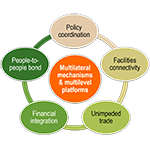 Could Hong Kong increase its soft power through its generosity in welcoming non-local students? Answers to this query may have policy implications well beyond the realm of education.
Could Hong Kong increase its soft power through its generosity in welcoming non-local students? Answers to this query may have policy implications well beyond the realm of education.
Hong Kong has long had a reputation for offering high-quality higher education and, over the past several decades, has witnessed a steady influx of non-local students to its tertiary institutions. However, exactly how open and “international” this sector should be remains understudied. Many argue that priority should be given to locals over non-locals in University Grants Committee (UGC) funding, while some have criticized the authorities’ preference for mainland Chinese over other non-local students. The aim of this research is not about finding the optimal way of distributing resources between local and non-local students in Hong Kong but to empirically explore the necessity and rationale of the policy. Developed Western countries tend to welcome or even proactively recruit international students. This friendly approach is motivated by considerations beyond that of earning revenue, including a desire to restructure the population, reposition the country economically, and broaden the country’s cultural influence. Such a policy is in fact part of a strategy to project the country’s “soft power”, as Joseph Nye, who coined the term in 1990, argued. Unlike hard power, which is based primarily on military and economic might, the strength of soft power lies in unconscious ideological affinity, common values, and cultural attractions. In that sense, education may be an effective platform for nurturing such affinities. The national “Go Global” strategy, as well as the recent Belt and Road Initiative, emphasize the necessity for China to further integrate with the world. Hong Kong has historically functioned as a hub connecting China and other parts of the world via socio-economic networks. Strong soft power would allow Hong Kong to play the role more efficiently. Based on this context and from the perspective of soft power, the research team aims to examine the question of whether the educational experience of Hong Kong-trained non-local university students—regardless of their ethnic background—could in fact strengthen Hong Kong’s soft power. Qualitative and quantitative approaches would both be adopted in the investigation, which would include a questionnaire survey, in-depth interviews, and a comprehensive analysis of literature and secondary data. It is hoped that the results of the research will offer empirical support for the formulation and implementation of related policies. ■
|
||||||||||||||||||||||||||
On Education
Survey on Student Withdrawal from School and Teacher Turnover Investigator: Esther S. C. Ho* Funding source: The Hong Kong Association of the Heads of Secondary Schools Limited  The “Survey on Student Withdrawal from School and Teacher Turnover” is a collaborative research study by the Hong Kong Association of the Heads of Secondary Schools Limited (HKAHSS) and the Hong Kong Centre for International Student Assessment (HKCISA). It aims to:
The “Survey on Student Withdrawal from School and Teacher Turnover” is a collaborative research study by the Hong Kong Association of the Heads of Secondary Schools Limited (HKAHSS) and the Hong Kong Centre for International Student Assessment (HKCISA). It aims to:
|
||||||||||||||||||||||||||
On Family
A Study on Family Research in Hong Kong: A Critical Review and Annotated Bibliography Investigators: Mooly M. C. Wong (PI), Joyce L. C. Ma (PI), Po-san Wan*, Ting-kwok Iu, Lily Xia, & Rhea Rui Yuan Commissioned by: Family Council, Home Affairs Bureau, & Central Policy Unit, HKSAR Government Completion date: January 2019 |
||||||||||||||||||||||||||
|
||||||||||||||||||||||||||
A Study on Family Well-being in Hong Kong
Investigators: Joyce L. C. Ma (PI), Mooly M. C. Wong, Po-san Wan*, & Lily Xia Commissioned by: Hong Kong Family Welfare Society Completion date: April 2020 |
||||||||||||||||||||||||||
|
||||||||||||||||||||||||||
On Gender
A Study on Public Attitudes towards Female Political Leadership Investigators: Jing Song (PI) & Sally K. W. Lo* (Co-PI) Commissioned by: Equal Opportunities Commission, Hong Kong  Female political participation is an important aspect of gender equality. However, in general, the proportion of women in positions of political leadership has always been lower than that of men. Despite the increase in female representation in the political sphere over the past few decades, women make up an average of only 23% of members of parliaments worldwide, and the growth has levelled off in recent years. In Hong Kong, women are under-represented in political institutions, and knowledge about the public’s views on gender equality and female political leadership remains limited.
Female political participation is an important aspect of gender equality. However, in general, the proportion of women in positions of political leadership has always been lower than that of men. Despite the increase in female representation in the political sphere over the past few decades, women make up an average of only 23% of members of parliaments worldwide, and the growth has levelled off in recent years. In Hong Kong, women are under-represented in political institutions, and knowledge about the public’s views on gender equality and female political leadership remains limited.This study examined the Hong Kong public’s views on female political leadership and the barriers faced by women in attaining political leadership in Hong Kong. Specifically, the aim was to expand understanding of this issue in three aspects: perceptions and beliefs about gender equality in politics and female political leadership; qualities considered desirable in political leaders and differences related to gender; and structural and other barriers faced by women in attaining political leadership. Through the collection and analysis of quantitative and qualitative data, gender stereotypes of the performance of leaders held by the public and structural under-representation were found in this study: men were generally considered more visionary and more capable in the fields of economics, finance, and security, whereas women were believed to be more compassionate and better in the areas of education and social welfare. The study also found that women face obstacles such as domestic responsibilities and double standards, and usually receive unwanted public attention on their body shape and appearance. While respondents showed support for measures such as family-friendly policies, they also expressed reservations about the imposition of a quota system for increasing female political participation. This research finding was discussed positively in a total of 18 news reports. ■
|
||||||||||||||||||||||||||
Train the Trainers: Minority Girls and Gender Justice
Investigators: Raees B. Baig (PI), Susanne Y. P. Choi, Sally K. W. Lo*, & Janice Chan Funding source: Knowledge Transfer Project Fund, CUHK  Ethnic minority women in Hong Kong, mainly Muslim women, have been suffering from double marginalization and are at a greater risk of experiencing inequality than other groups because they face suppression in mainstream society as well as in their minority communities. Frontline workers find it difficult to reach out to ethnic minority women due to language and cultural barriers. The lack of interaction between minority women and local women, and the failure of minority women to integrate in local society, also mean that limited progress has been made in the process of empowering women.
Ethnic minority women in Hong Kong, mainly Muslim women, have been suffering from double marginalization and are at a greater risk of experiencing inequality than other groups because they face suppression in mainstream society as well as in their minority communities. Frontline workers find it difficult to reach out to ethnic minority women due to language and cultural barriers. The lack of interaction between minority women and local women, and the failure of minority women to integrate in local society, also mean that limited progress has been made in the process of empowering women.The aim of this project was to establish connections among young minority Muslim women and local women. By strengthening their mutual engagement, the research team expected to empower both groups in the effort to advocate for the rights of women in Hong Kong. This project provided a platform for young ethnic minority women to discuss gender equality with their peers, people from the older generation in society, members of their families, and their religious communities. Through training and conversations, young women eventually built up the capacity to lead the discussion. Intergenerational gender perception is important in this context as it affects the education, employment, and lifelong development of young people. Therefore, an intergenerational approach allowed us to observe acculturation and changes in the ethnic minorities of Hong Kong. The networks and mutual support groups developed from this project served as a focal point for the empowerment of Muslim women. The project collected data on how ethnic minorities perceive gender equality, which shed light on issues of diversity and inclusion in our society. It is crucial for the government and service providers to possess such knowledge to be able to envisage the genuine experience of inequality encountered by ethnic minorities, and thus to provide support by devising and implementing policies and providing services. The project organized eight sessions of gender awareness training for a group of young, ethnic minority Muslim women, which focused on exploring different gender concepts and issues. Representatives from local and international stakeholders were also invited to participate in strengthening the focus on ethnic minority women. In 2019, the project organized two screenings of the documentaries “Menstrual Man” and “Period. End of Sentence.”. Both documentaries describe how Indian society’s stigmatization of menstruation has prohibited women from obtaining sanitary products, which in turn has limited their mobility and educational opportunities. The project organized a sharing session on generational differences and conflict management to start a dialogue with ethnic minority parents. The project also interviewed Mufti Muhammad Arshad, the Chief Imam of Hong Kong, and other religious elite figures in Hong Kong to eliminate misunderstandings about the Islamic religion and to share views on gender issues from an Islamic perspective. The publication of a book Break the Barriers: Inside Stories of Ethnic Minority Muslim Girls in Hong Kong was an outcome of the project. It consists of articles written by young Muslim women reflecting on gender justice, which reveal their determination to shatter stereotypes imposed by society. ■ Baig, R. B., Lo, S. W. K.*, & Kwok, S. (Eds.). (2020). Break the barriers: Inside stories of ethnic minority Muslim Girls in Hong Kong. Hong Kong: Department of Social Work, CUHK. |
||||||||||||||||||||||||||
On Health
Implementation of A Family-based Multimedia Educational Programme to Promote the Utilisation of Colorectal Cancer Screening By Older South Asian Ethnic Minorities in Hong Kong Investigators: Winnie K. W. So* (PI), Dorothy N. S. Chan, Kai-chow Choi, & Carmen W. H. Chan Funding source: Health Care and Promotion Scheme, Food and Health Bureau, HKSAR Government  Colorectal cancer (CRC) is currently the most prevalent type of cancer in Hong Kong. As CRC screening is recognised as an effective strategy for CRC prevention, its universal utilisation by residents of Hong Kong is crucial for reducing the prevalence of CRC in Hong Kong. Previous studies have reported that South Asian ethnic minorities do not tend to utilise cancer screening services, as they face multiple barriers to do so, such as language barriers, and a limited awareness of the need to undergo regular screening and how to access screening services. Older individuals in this population are more prone to face these barriers, as they are less able to comprehend the health information disseminated by the Hong Kong government. These individuals therefore require linguistically appropriate health educational programmes that increase their knowledge of CRC prevention and screening.
Colorectal cancer (CRC) is currently the most prevalent type of cancer in Hong Kong. As CRC screening is recognised as an effective strategy for CRC prevention, its universal utilisation by residents of Hong Kong is crucial for reducing the prevalence of CRC in Hong Kong. Previous studies have reported that South Asian ethnic minorities do not tend to utilise cancer screening services, as they face multiple barriers to do so, such as language barriers, and a limited awareness of the need to undergo regular screening and how to access screening services. Older individuals in this population are more prone to face these barriers, as they are less able to comprehend the health information disseminated by the Hong Kong government. These individuals therefore require linguistically appropriate health educational programmes that increase their knowledge of CRC prevention and screening.
The aim of this project was to implement a family-based multimedia educational programme that increases the awareness of the importance of CRC screening and promotes the utilisation of CRC screening by South Asian older adults. We recruited South Asian older adults and one of their younger family members to the programme, which was delivered to participants by trained instructors at centres with which we have established collaborations and are operated by non-governmental organisations (NGOs) serving South Asians in the local community. We found that the programme considerably enhanced CRC screening utilisation by older adults, and that a significant proportion of them were able to submit their stool samples for screening on their own, rather than relying on assistance from their younger family members. These observations indicate that the programme effectively increased both the willingness of the older adults to undergo CRC screening and their self-efficacy at submitting their samples for screening. Our findings indicate that our family-based multimedia programme could effectively promote CRC screening utilisation to South Asian ethnic minorities throughout Hong Kong, and to increase their knowledge of CRC prevention and screening. We recommend that the Hong Kong government allocates further resources to enable the implementation of this family-based programme at all NGOs serving South Asians in Hong Kong, to enable this programme to be integrated as part of the support services provided by these NGOs. For example, the government may consider providing funding for the employment and training of programme instructors, to increase the competence and knowledge of these instructors in the delivery of the programme to their community peers. The building of such partnerships with these NGOs may be the key to enhancing the reach of the educational programme to local South Asian communities and the sustainability of its implementation, enabling more South Asians to become aware of the importance of CRC screening and be willing to voluntarily undergo screening. Ultimately, this could reduce both the prevalence of CRC in this underserved population and associated burdens on the health system. |
||||||||||||||||||||||||||
A Study on Public Attitudes towards Improving the Sanitation of Public Toilets Investigators: Yuk-sik Chong (PI), Fanny M. Cheung*, Victor Zheng*, & Po-san Wan* Funding source: Policy Research @ HKIAPS, CUHK |
||||||||||||||||||||||||||
|
||||||||||||||||||||||||||
An Ongoing Follow-up Study on the Participation Rate in Cervical Cancer Screening among South Asian Women Investigators: Dorothy N. S. Chan (PI), Winnie K. W. So*, Kai-chow Choi, & Sharmila Gurung Funding source: Health Care and Promotion Scheme, Food and Health Bureau, HKSAR Government  Cervical cancer screening, or the Pap test, is one of the most effective ways of preventing cervical cancer via the early detection of any signs of the development of tumours. Nevertheless, despite the availability of cervical cancer screening services for the Hong Kong public and efforts on the part of the government to promote their utilization, the research team’s previous survey conducted in 2012 showed that the rate of utilization of the Pap test among South Asian women in Hong Kong was as low as 36.9%. In view of this, culturally relevant multimedia education programmes were developed to increase South Asian women’s awareness and knowledge of cervical cancer and of the measures that can be taken to prevent it. Moreover, information on how to access cervical cancer screening services and interpretation services to overcome language barriers was also given during the implementation of the programmes.
Cervical cancer screening, or the Pap test, is one of the most effective ways of preventing cervical cancer via the early detection of any signs of the development of tumours. Nevertheless, despite the availability of cervical cancer screening services for the Hong Kong public and efforts on the part of the government to promote their utilization, the research team’s previous survey conducted in 2012 showed that the rate of utilization of the Pap test among South Asian women in Hong Kong was as low as 36.9%. In view of this, culturally relevant multimedia education programmes were developed to increase South Asian women’s awareness and knowledge of cervical cancer and of the measures that can be taken to prevent it. Moreover, information on how to access cervical cancer screening services and interpretation services to overcome language barriers was also given during the implementation of the programmes.
The aim of this follow-up study was to assess whether efforts to implement health education programmes for South Asian women in Hong Kong on the topic of cervical cancer and its prevention had resulted in an increase in the utilization rate of cervical cancer screening. A follow-up survey was conducted in 2017, which revealed that 40.3% of the 776 interviewed South Asian women had previously undertaken a Pap test, suggesting a slight increase in the uptake of cervical cancer screening among local South Asian women. In this survey, the research team also found that the availability of the clinics known to the survey participants and the issue of language had a significant relationship with the barriers that South Asian women faced in utilizing cervical cancer screening services, and thus with the uptake of screening. Recently, the team conducted a second follow-up survey on this group of women, where 633 participants responded to the survey. This follow-up survey showed that an increasing number of South Asian women had attended cervical cancer screening. Overall, 53.1% of the South Asian women had previously undertaken at least a Pap test, indicating that the delivery of the education programmes had resulted in a considerable increase in cervical cancer screening uptake among the participants in the survey. These results suggest that the implementation of culturally relevant multimedia health education programmes among South Asian women in Hong Kong is an effective means of increasing their intention to undergo cancer screening, which will subsequently increase the uptake rate of cervical cancer screening among these individuals. Moreover, to overcome these barriers to the utilization of Pap tests, which were identified in the first follow-up survey, the research team proposed a currently ongoing study that involves the development of a further education programme, delivered by community health workers of South Asian origin, in an attempt to more effectively raise the intention of South Asian women within the community to undergo cervical cancer screening. ■ |
||||||||||||||||||||||||||
Development of a Community Health Worker-led Multimedia Intervention to Increase Cervical Cancer Screening Utilization among South Asian Women in Hong Kong
Investigators: Cho-lee Wong (PI), Winnie K. W. So*, & Dorothy N. S. Chan Funding source: Health Care and Promotion Scheme, Food and Health Bureau, HKSAR Government  With cervical cancer being one of the most common forms of cancer among South Asian women, the dissemination of information on the benefits to these individuals of utilizing cancer screening services in preventing cervical cancer is of paramount importance. Nevertheless, South Asians may face language barriers to obtaining health-related information, which could result in their lacking awareness of the availability of cervical cancer screening services for the Hong Kong public. In light of this, it would be better if health programmes dedicated to South Asians could be delivered by community health workers (CHW), who are lay individuals within a community who are trained to deliver health-related programmes to peers in their community of the same ethnic origin. These CHWs can serve as a bridge by communicating health information between healthcare professionals and members of the community. Furthermore, these individuals would possess knowledge of the cultural practices that are detrimental to the health of their peers in the community, and would therefore provide more comprehensive and effective health education to their peers by targeting those practices. This train-the-trainer approach has previously been demonstrated to be useful in enhancing the effectiveness of health education programmes dedicated to ethnic minorities.
With cervical cancer being one of the most common forms of cancer among South Asian women, the dissemination of information on the benefits to these individuals of utilizing cancer screening services in preventing cervical cancer is of paramount importance. Nevertheless, South Asians may face language barriers to obtaining health-related information, which could result in their lacking awareness of the availability of cervical cancer screening services for the Hong Kong public. In light of this, it would be better if health programmes dedicated to South Asians could be delivered by community health workers (CHW), who are lay individuals within a community who are trained to deliver health-related programmes to peers in their community of the same ethnic origin. These CHWs can serve as a bridge by communicating health information between healthcare professionals and members of the community. Furthermore, these individuals would possess knowledge of the cultural practices that are detrimental to the health of their peers in the community, and would therefore provide more comprehensive and effective health education to their peers by targeting those practices. This train-the-trainer approach has previously been demonstrated to be useful in enhancing the effectiveness of health education programmes dedicated to ethnic minorities.
The aim of this project was to develop a CHW-led multimedia intervention for South Asian women in Hong Kong, which educates them on the risk factors for cervical cancer and on effective preventive measures, thereby enhancing their intention to undergo screening for cervical cancer. The recruited CHWs were first trained, by educating them on various aspects of cervical cancer and methods for its early detection. Through such training, these CHWs will become more competent in educating their community peers, and more effective at encouraging them to undergo cancer screening. Combining the use of a multimedia approach, which makes the programme more interesting and interactive, will be of greater benefit to the participants and lead to improved learning outcomes. In this project, the research team collected quantitative data from the programme participants, assessing their readiness to undergo cervical cancer screening, in order to evaluate whether the programme was effective at increasing their intention to undergo screening. The findings of this study will provide further evidence of the effectiveness of combining CHWs and multimedia in delivering health education programmes to increase the intention of South Asian ethnic minorities to screen for cancer, thereby making a case for such programmes to be developed to promote the health of these individuals. ■ |
||||||||||||||||||||||||||
Development of a Multimedia Health Education Programme to Promote Cervical Cancer Prevention among South Asian Women in Hong Kong
Investigators: Winnie K. W. So* (PI), Carmen W. H. Chan, Doris Y. P. Leung, Helen Y. L. Chan*, Sek-ying Chair, & Andrew Chan Funding source: Knowledge Transfer Project Fund, CUHK  Cervical cancer is one of the most common forms of cancer found in South Asian women. Its prevention through early detection by screening is therefore of great importance. However, South Asians are known to face multiple barriers to the utilization of the available cervical cancer screening services in Hong Kong, including language difficulties and their lack of awareness and knowledge of effective strategies for preventing cancer. The research team’s previous survey also revealed a low rate of utilization by South Asian women in Hong Kong of those cervical cancer screening services that are available to the public. The dissemination of information on cervical cancer and the importance to these individuals of making use of cervical cancer screening services, via health education programmes, is therefore warranted. In view of this, the team proposed a study involving the development of a multimedia health education programme aimed at enhancing the knowledge of South Asian women in Hong Kong on cervical cancer, and at raising their awareness of the importance of undergoing cancer screening in preventing cervical cancer. Afterwards, the effectiveness of the programme in achieving these aims was evaluated.
Cervical cancer is one of the most common forms of cancer found in South Asian women. Its prevention through early detection by screening is therefore of great importance. However, South Asians are known to face multiple barriers to the utilization of the available cervical cancer screening services in Hong Kong, including language difficulties and their lack of awareness and knowledge of effective strategies for preventing cancer. The research team’s previous survey also revealed a low rate of utilization by South Asian women in Hong Kong of those cervical cancer screening services that are available to the public. The dissemination of information on cervical cancer and the importance to these individuals of making use of cervical cancer screening services, via health education programmes, is therefore warranted. In view of this, the team proposed a study involving the development of a multimedia health education programme aimed at enhancing the knowledge of South Asian women in Hong Kong on cervical cancer, and at raising their awareness of the importance of undergoing cancer screening in preventing cervical cancer. Afterwards, the effectiveness of the programme in achieving these aims was evaluated.
Education programmes utilizing a multimedia approach have previously been shown to enhance the effectiveness of programmes aimed at disseminating health-related knowledge to ethnic minority groups. Such approach was adopted in this study on the presentation of health information to the participants, via health talks using a variety of multimedia approaches including a PowerPoint presentation, video clip presentation, and health information booklets. During the education programme, information on cervical cancer, its risk factors and preventive measures, as well as information on the importance of screening for cervical cancer and common misconceptions on the utilization of such services, was presented. To implement the programme, the team fostered collaborations with a number of South Asian community centres and organizations so that a venue would be provided for the health talks and distribution of booklets. Overall, 51 health talks were delivered in South Asian organizations all over Hong Kong, with a total audience of 1,061 South Asian participants. A survey for evaluating the programme revealed that the majority (over 90%) of the participants agreed that the programme was effective at enhancing their knowledge of cervical cancer and increasing their intention to undergo cancer screening. This indicates that the delivery of a multimedia education programme can be useful in encouraging South Asian women to undergo screening for cervical cancer. ■ |
||||||||||||||||||||||||||
Health Behaviour in School-aged Children Study in Hong Kong: Assessing the Physical, Emotional, and Social Well-being
Investigators: Esther S. C. Ho* (PI), Anthony Y. H. Fung*, & Annisa Lee Lai Funding source: Public Policy Research Funding Scheme, Policy Innovation and Co-ordination Office, HKSAR Government  The aim of the “Health Behaviour in School-aged Children” (HBSC) Study in Hong Kong is to assess the physical, emotional, and social well-being and health behaviours of school-aged children and their association with demographic factors and social and environmental contexts, and to inform policies and practices on health promotions and interventions among children. It attempts to address the policy objectives of the Commission on Children formed by the HKSAR Government in 2018. Coordinated by the World Health Organization Regional Office for Europe, the HBSC is a quadrennial study in which over 40 countries and regions are currently participating. Taking part in this cross-national study will enable reliable health-related data on children in Hong Kong to be collected and compared with comparable data from other countries. This is essential for formulating evidence-based policies, setting strategies and priorities, and developing local frameworks and indicators for monitoring the health and well-being of Hong Kong’s children, all of which are the objectives of the Commission on Children. This study will also address the increasingly prevalent mental and physical health problems of Hong Kong children, as noted in the Mental Health Review (2017), as well as the recommendation of the Review that health-related data should be collected in a timely, regular, and systematic manner. ■
The aim of the “Health Behaviour in School-aged Children” (HBSC) Study in Hong Kong is to assess the physical, emotional, and social well-being and health behaviours of school-aged children and their association with demographic factors and social and environmental contexts, and to inform policies and practices on health promotions and interventions among children. It attempts to address the policy objectives of the Commission on Children formed by the HKSAR Government in 2018. Coordinated by the World Health Organization Regional Office for Europe, the HBSC is a quadrennial study in which over 40 countries and regions are currently participating. Taking part in this cross-national study will enable reliable health-related data on children in Hong Kong to be collected and compared with comparable data from other countries. This is essential for formulating evidence-based policies, setting strategies and priorities, and developing local frameworks and indicators for monitoring the health and well-being of Hong Kong’s children, all of which are the objectives of the Commission on Children. This study will also address the increasingly prevalent mental and physical health problems of Hong Kong children, as noted in the Mental Health Review (2017), as well as the recommendation of the Review that health-related data should be collected in a timely, regular, and systematic manner. ■
|
||||||||||||||||||||||||||
Health Inequity Matters to Everyone: The Vision and Research Focus of the Newly Established CUHK Institute of Health Equity
Co-Directors: Jean Woo*, Michael Marmot, & Eng-kiong Yeoh Associate Directors: Hung Wong* & Roger Chung* 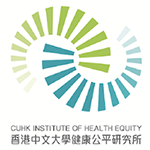 Hong Kong is the place with the longest life expectancy in the world, yet it also has huge income and wealth inequalities. These social inequalities are expected to drive health inequalities in Hong Kong, which are mostly unnecessary and avoidable. Given the social gradient of health, health inequities exist not only among those at the bottom of the social ladder but also among relatively advantaged groups. In other words, health equity matters to everyone in our society.
Hong Kong is the place with the longest life expectancy in the world, yet it also has huge income and wealth inequalities. These social inequalities are expected to drive health inequalities in Hong Kong, which are mostly unnecessary and avoidable. Given the social gradient of health, health inequities exist not only among those at the bottom of the social ladder but also among relatively advantaged groups. In other words, health equity matters to everyone in our society.With the commitment and determination of CUHK to research, educate, and transfer knowledge to achieve health equity in Hong Kong and other parts of the world, the CUHK Institute of Health Equity (CUHK IHE) was established in 2020 with the vision of being a leading institution in promoting health equity studies in the Asian region. CUHK IHE aims to examine and understand issues of health equity in Hong Kong, inform government policies and intervention programmes to improve health equity in Hong Kong, and establish a network for the Asian region. In close collaboration with the Institute of Health Equity at University College London, CUHK IHE will conduct a comprehensive review on health equity in Hong Kong, which will focus on understanding the extent of health inequities and the underlying forces driving them from different perspectives. Specific topics will be identified and discussed in detail in an upcoming series of health equity reports. As the Coronavirus Disease 2019 (COVID-19) spreads across the world, it is argued that a devastating feedback loop between the disease (and associated containment measures) and social inequality has been set off in many countries. In response, CUHK IHE is currently conducting a mixed-methods study to examine the multi-dimensional impacts of the COVID-19 outbreak, in terms of physical, psychological, social, and economic aspects, on vulnerable populations in Hong Kong. Specifically, this study consists of a quantitative telephone survey on the impact of COVID-19 on the general Hong Kong population and qualitative interviews with members of socially vulnerable groups including older adults, migrants, and the working poor. Our findings are expected to have significant implications for policymaking on targeted interventions, mitigation efforts, public health education, social and economic alleviation policies, and financial support, as well as for promotion campaigns. Apart from research on COVID-19, the aim in other on-going research work is to explore factors contributing to the long life expectancies in Hong Kong and to disparities in both the physical and psychosocial well-being of Hong Kong people. Moreover, CUHK IHE and the Hong Kong Institute of Asia-Pacific Studies will co-organize a health equity webinar series in the coming months, with the aim of raising public awareness on health equity, building up a network of researchers and stakeholders in the field, and promoting health studies in the Asian region. Proposed topics include health equity and COVID-19, housing, health care, and mental health. ■ |
||||||||||||||||||||||||||
On Socio-political Participation
The Advantages and Limitations of the Participation of Professionals in Public Affairs Investigators: Victor Zheng* & Po-san Wan* Commissioned by: Hong Kong Professionals and Senior Executives Association (HKPASEA) Completion date: September 2019 |
||||||||||||||||||||||||||
|
||||||||||||||||||||||||||
On Youth
A Longitudinal Study of Adolescents in Hong Kong (HKLSA) Investigators: Esther S. C. Ho* (PI) & Stephen W. K. Chiu Funding sources: General Research Fund (GRF) & Research Grants Council (RGC)  A longitudinal study of adolescents in Hong Kong (HKLSA) is the first research project of its kind in Hong Kong for tracing the patterns of transition of adolescents from the ages of 15 to 25. It is conducted in four phases: (1) the senior secondary years from the ages of 15 to 18; (2) the 1st to 2nd post-secondary years from ages 18 to 19; (3) the 3rd to 4th post-secondary years from ages 20 to 21; and (4) the 5th to 7th post-secondary years from ages 22 to 25. The participants are students who participated in the Programme for International Student Assessment (PISA) 2012 at age 15. They were born around the time of Hong Kong’s return to Chinese sovereignty in 1997, when major education reforms were launched, which adds to the historic significance of this ten-year longitudinal project.
A longitudinal study of adolescents in Hong Kong (HKLSA) is the first research project of its kind in Hong Kong for tracing the patterns of transition of adolescents from the ages of 15 to 25. It is conducted in four phases: (1) the senior secondary years from the ages of 15 to 18; (2) the 1st to 2nd post-secondary years from ages 18 to 19; (3) the 3rd to 4th post-secondary years from ages 20 to 21; and (4) the 5th to 7th post-secondary years from ages 22 to 25. The participants are students who participated in the Programme for International Student Assessment (PISA) 2012 at age 15. They were born around the time of Hong Kong’s return to Chinese sovereignty in 1997, when major education reforms were launched, which adds to the historic significance of this ten-year longitudinal project.Prof. Esther S. C. Ho and her research team examined the choice made by students of which higher education institution in Hong Kong to attend. Hong Kong’s higher education system has undergone huge expansion and greater differentiation since 2000. Drawing on semi-structured interview data from the HKLSA and with a detailed classification of the higher education institutions attended by Hong Kong students and of their transition pathways, it was found that the concept of the “institutional habitus” of higher education institutions has manifested itself in three forms: infrastructure, prestige, and culture; and that these have shaped the higher education decisions of students from different socio-economic backgrounds. Moreover, the students’ educational choices reflect an alignment between the habitus of the institution and that of the individual. ■ |
||||||||||||||||||||||||||
Young People’s Perceptions of the Future: A Comparison of Hong Kong and Beijing
Investigators: Anthony Y. H. Fung* (PI), Victor Zheng*, & Kevin T. W. Wong (Hong Kong team) Collaborator: National Institute of Social Development, Chinese Academy of Social Sciences Funding source: Policy Research @ HKIAPS, CUHK  The aim of this project is to understand, investigate, and compare the perceptions of young people in Hong Kong and Beijing about their future. A city-wide survey will be conducted simultaneously in Hong Kong and Beijing in 2020, in which a common questionnaire will be used to interview young people between the ages of 15 and 34. Sub-themes of the research will include young people’s self-image, confidence in the society, subjective well-being, career planning, as well as education and job inspiration. This research will shed new light and understanding on the lives of young people and the challenges that they face living in highly globalized metropolitan cities in a borderless world with sophisticated technology. ■
The aim of this project is to understand, investigate, and compare the perceptions of young people in Hong Kong and Beijing about their future. A city-wide survey will be conducted simultaneously in Hong Kong and Beijing in 2020, in which a common questionnaire will be used to interview young people between the ages of 15 and 34. Sub-themes of the research will include young people’s self-image, confidence in the society, subjective well-being, career planning, as well as education and job inspiration. This research will shed new light and understanding on the lives of young people and the challenges that they face living in highly globalized metropolitan cities in a borderless world with sophisticated technology. ■
|
||||||||||||||||||||||||||




 1. Family core beliefs;
1. Family core beliefs;

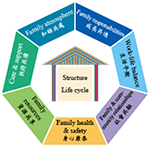 The aim of this study was to develop a socially relevant and culturally appropriate measurement tool with sound psychometric properties in terms of reliability and validity, and then to use that tool to assess the wellbeing of Hong Kong families.
The aim of this study was to develop a socially relevant and culturally appropriate measurement tool with sound psychometric properties in terms of reliability and validity, and then to use that tool to assess the wellbeing of Hong Kong families.
